Mopar Teases Electric Crate Swap, Maybe
The annual SEMA show in Las Vegas is rapidly approaching, meaning car companies will surely be dangling umpteen teaser images of what they’ve in store for this soirée in the desert. Stellantis is usually good for an outrageous reveal or three, and they’ve started off this year with an electrified bang.
UCOTD: 1965 Plymouth Barracuda
In an apparent attempt to give you all used-car whiplash, we're going from a 1972 Opel GT that's show-worthy to a 1965 Plymouth Barracuda that is clearly a project car that needs restoration.
QOTD: Missing Brands
Today's UCOTD got me thinking -- what now-dead '90s brands do you miss?
Junkyard Find: 1949 Plymouth Special Deluxe Sedan
I’ve been living in Colorado for 12 years now, and I’ve found that the junkyards here have plenty of both the rust-free Japanese cars you’d find in California yards and the late-model Detroit machinery of the Midwest yards (the liquor stores here also stock the watery yellow beers of both the Pacific Northwest and the Upper Midwest, great news if you’re throwing a Denver party that requires both Rainier and Hamm’s). The one thing that really sets Colorado car graveyards apart from those elsewhere (besides all the Scouts and edge-case 4WD cars) is the huge numbers of pre-1960 American vehicles that end up in the U-Wrench-It-type yards here. Here’s the latest, a 1949 Plymouth Special Deluxe sedan in a big self-service yard between Denver and Cheyenne.
Abandoned History: Dodge's Dead Import Trucks (Part II)
Dodge’s import truck story began in 1979, when the Mitsubishi Forte (or L200) arrived on North American shores, rebadged as the Dodge D-50 and Plymouth Arrow. A captive import like the Colt, the durable Dodge D-50 (later Ram 50) proved itself a solid entrant into the compact pickup truck market. What proved unpopular was the Plymouth Arrow, which did not make it past its initial 1979-1982 outing. The Ram 50 was refreshed in 1982 but was certainly due for replacement in 1987 when the second generation arrived.
Abandoned History: Dodge's Dead Import Trucks (Part I)
Recently on Abandoned History, we learned about the Colt, a captive import Dodge/Plymouth/Eagle/AMC/Renault sold courtesy of a badge swap on some compact cars from Mitsubishi. During that series’ tenure, one of our readers had a great idea: A separate Abandoned History discussion of the captive import trucks and SUVs in the Dodge portfolio. The time has come!
Abandoned History: The Chrysler UltraDrive Transmission (Part I)
The recent Rare Rides Icons post on the 1990 Chrysler Imperial Super-K Gingerbread Cookie Edition generated a few comments not only about the subject in question but its four-speed UltraDrive transmission. It seems more than one of you wants a discussion – no – an essay on the UltraDrive. Wish granted! Here we go.
Abandoned History: Chrysler and the Colt, Captive Economical Import Time (Part VII)
We arrive at the end of our Dodge Colt journey today. Colt started in 1971 as a cooperative program to provide Mitsubishi with a sales outlet in North America, and Chrysler with a compact and fuel-efficient car it didn’t have to design or build. Over the years the Colt evolved with the needs of the consumer and branched out into several different body styles.
Eventually, the tides shifted. Mitsubishi established their own dealerships in the United States (but not Canada) and started selling identical cars as were on Dodge/Plymouth dealer lots. Then, as Eagle came into being it also needed product to sell. Chrysler turned Eagle into its de facto outlet for imports and Mitsubishi cooperative products: Colts of regular and wagon persuasion became Eagles called Vista and Summit, in addition to their Dodge and Plymouth twins.
Last time we left our tale it was the dawn of 1993, and Colts were badged at Eagle dealers as a new generation of Summit. The Vista Wagon name was dead, now called Summit Wagon. Dodge, Plymouth, and Eagle dealers had an exciting new Colt as well! But it didn’t last long.
Abandoned History: Chrysler and the Colt, Captive Economical Import Time (Part V)
When we last left off in the tale of Dodge, Plymouth, and Eagle’s various Colt branding adventures, it was the late Eighties. After a wave of modernization in 1984-1985 where the first Colt sedan appeared and the range extended into the larger and very forward-thinking Colt Vista, Mitsubishi got in on the Colt action and sold a hatchback with its OEM diamond star up front and Mirage lettering on the back. As the Nineties approached, it was time for a new generation of Colts, and more options from a hot new brand: Eagle.
Abandoned History: Chrysler and the Colt, Captive Economical Import Time (Part IV)
By the early Eighties Chrysler was deep into its product partnership with Mitsubishi, which in North America was most visible via the mutually beneficial Colt. A lineup of rebadged Mitsubishis, the Colt expanded from its rear-drive beginnings in 1971, morphing into a rear- and front-drive mix by the end of the Seventies. In the earliest part of the Eighties, the line was consolidated into a single front-drive hatchback model. Around the middle of the decade, it was time for a fifth-generation Colt and some more lineup expansion. But this time, Dodge and Plymouth dealers wouldn’t be the only ones selling a Colt.
Abandoned History: Chrysler and the Colt, Captive Economical Import Time (Part III)
After Mitsubishi vehicles made their way to Dodge and Plymouth dealerships as the Colt in 1971, Chrysler expanded the fledgling model’s lineup quickly. Nine years after its introduction, the third generation Colt offerings (two different Mitsubishi models) were being discontinued. Accompanying the old Colts on the lot were all-new ones, though old and new alike were sold as ’79 model year cars. It’s Twin Stick time.
Abandoned History: Chrysler and the Colt, Captive Economical Import Time (Part II)
Chrysler had its first involvement with Mitsubishi Motors Corporation in 1971. With a considerable stock purchase by Chrysler, the two companies’ long-lived captive import cooperation began. Introduced immediately to Americans in 1971 as the Dodge Colt, the nameplate was on its second generation by 1977. We pick up in the middle of that year, as third-gen Colts started to arrive from Japan. In the unusual arrangement, brand new (and differently sized) Colts were sold alongside second-gen Colts during the same model year.
Abandoned History: Chrysler and the Colt, Captive Economical Import Time (Part I)
For over 20 years Chrysler offered various Mitsubishi offerings as rebadged captive import vehicles in the North American market. For a handful of years, a Colt at your Chrysler-Dodge-Plymouth-Jeep-Eagle-DeSoto-AMC dealer was the exact same one you’d buy at the Mitsubishi dealer across the street. Let’s take some time and sort out the badge swapping history of Colt.
Buy/Drive/Burn: Mid-seventies Captive Imports
Today’s Seventies captive imports trio comes to us via suggestion by commenter MRF 95 T-Bird. He wants to see which of the Manta, Capri, and Arrow warrants a malaise era Buy. We’ll straddle two model years today, 1975 and 1976.
Junkyard Find: 1982 Plymouth Sapporo
Junkyard Find: 1981 Plymouth Horizon Miser
Even while importing Mitsubishi Colt Galants and badging them as Dodge Colts, Chrysler looked to its European outposts to find an additional suitable econo-commuter to sell in North America. The Hillman Avenger aka Plymouth Cricket hadn’t worked out so well, and nor had the Simca 1204, but the Simca/Talbot Horizon under development in the middle 1970s looked very promising. Soon enough, an Americanized version made it into production, making its debut here in the 1978 model year and staying in production all the way through 1990. I’ve documented quite a few of these cars in junkyards, but the super-economical Horizon Miser had eluded me… until now.
Junkyard Find: 1983 Plymouth Scamp
North American sales of Japanese-made small pickups went crazy during the 1970s, with the Detroit Big Three getting in on the action with rebadged Mazdas, Isuzus, and Mitsubishis. Ford and GM eventually created their own Michigan-style small trucks, the Ranger (1983 model year) and S-10 (1982 model year) but where was struggling Chrysler— in a frenzy trying to get the new K-Cars out the door— supposed to find enough money to develop a new truck design from scratch? Fortunately, Volkswagen had shown that front-wheel-drive worked well enough in little pickups, and the versatile Omnirizon platform proved suitable for a bit of El Camino-ization. Here’s the result, found in a Denver yard last summer.
Junkyard Find: 2001 Plymouth Neon, Last Gasp of the Plymouth Brand Edition
Junkyard Find: 1973 Plymouth Duster 340
Rare Rides: The 1982 Plymouth TC3, Sporty Liftback Time
Today’s Rare Ride is the much sportier (but mostly the same) liftback version of the Horizon that everyone forgot. It’s a Plymouth TC3, from 1982.
Junkyard Find: 1980 Plymouth Horizon
After the Oil Crisis of 1973, Chrysler didn’t have the resources needed to design and build a subcompact economy car from scratch. Fortunately, Chrysler’s Japanese ally, Mitsubishi, was willing to ship over plenty of cars to be sold as Dodge and Plymouth Colts (we will not discuss the wretched Plymouth Cricket aka Hillman Avenger at this time). The Colt didn’t get front-wheel-drive until 1979, though, so Chrysler USA turned to Chrysler Europe for the Simca-designed Horizon platform and began selling Dodge Omnis and Plymouth Horizons in 1978.
Here’s an early Horizon in a Denver self-service yard.
Rare Rides: A Beige Plymouth Champ - American Malaise From 1980
Rare Rides has featured a couple of Plymouths before, both of which were sporty and boasted two doors. Today’s Plymouth also has two doors, but is perhaps not quite as performance oriented as its brethren on these pages.
Hailing from 1980, it’s a super Malaisey Champ hatchback.
Buy/Drive/Burn: Old Man Garage Queens From the Early 2000s
Once upon a time in the early 2000s, a special convergence of factors created three very special cars. The most important element in the cars’ creation was the motoring public’s desire for things that appeared “retro” in the early part of the millennium. This retro desire occurred around the same time as some meetings in Michigan, where executives at the Big Three surely conducted consumer clinics with retired old men.
Remember, you can only burn one of these.
Rare Rides: Ooh Barracuda - the Fastback Plymouth From 1965
Today’s Rare Ride is a Plymouth Barracuda, but not the one which generally springs to mind whenever someone mentions the legendary nameplate. Rather, it’s the first of the line. Let’s check out this special fastback.
Buy/Drive/Burn: A Chrysler Fuselage Trio From 1971
It started off casually enough, in the luxury Slack chat environment of TTAC just a day or so ago. Amidst a conversation about large Chryslers of the early ’70s, TTAC’s Steph Willems declared he wasn’t sure which fuselage-design Chrysler product he’d choose to take home.
Let’s see if we can’t venture some opinions on this topic.
QOTD: What Was Peak K-car for You?
It was one of those make or break moments. A company teetering on the financial verge which threw a Hail Mary at the right time — and at the right target. The company in question was Chrysler, and the Hail Mary was the K-car platform.
Today we ask you: What was peak K?
Junkyard Find: 1976 Plymouth Volare Coupe
The A-Body Plymouth Valiant (and its Dodge sibling, the Dart), stayed in American production from the 1960 model year all the way through 1976. Legendary for its sturdiness, the Valiant was sure to be a tough act to follow. The Plymouth Volarés and Dodge Aspens appeared in 1976, never gained the affection given to their predecessors, and were facelifted and renamed the Gran Fury and Diplomat in 1981. Here’s a luxed-up first-year Volaré I spotted in a Northern California self-service yard.
QOTD: What's Your Favorite Diamond-Star Motors Crapwagon?
Earlier this week in TTAC’s always entertaining Slack chat, Adam Tonge suggested (without sarcasm) how the B&B might enjoy discussing the market entrants of the Diamond-Star Motors company and picking favorites. Shortly after this discussion, the very DSM Plymouth Laser we saw in yesterday’s Rare Rides fell right in my lap, and this all seemed like destiny.
Of the varied selection, which Diamond-Star Motors vehicle is your favorite?
Rare Rides: The 1992 Plymouth Laser - a Manual, Turbo, All-Wheel Drive Beauty From DSM
Our last Rare Ride was the little hot hatch Isuzu I-Mark RS, which was just oh-so-80s. Today we move forward in time just four years, to a different sort of sporty hatch.
This one’s Japanese and American. It’s also turbocharged and all-wheel drive. Can you handle some extreme Diamond Star?
Rare Rides: The Colt Vista From 1989 - a Handy Captive Import MPV
A couple weeks ago we took a look at a tidy, light blue Nissan Stanza Wagon, which we determined was a very early example of the crossover breed that would heat up decades later. I can happily report the Stanza was quickly snapped up by an automotive enthusiast who plans to take good care of it. Since that little light blue square is off the market, I found a different vehicle of the same general purpose (and color).
Let’s trot on over and take a look at the Colt Vista.
Junkyard Find: 1993 Plymouth Voyager With Five-Speed Manual
The original K-platform-based Chrysler minivans, built for the 1984 through 1995 model years, sold like mad, helped kill the station wagon, and forced the competition to get serious about selling minivans in the United States. Buyers could get the 1984-95 four-cylinder Caravan, Voyager, or Town & Country with a five-speed manual transmission, though few did.
Here’s the first 5-speed second-generation Chrysler minivan I have ever found in a wrecking yard.
Junkyard Find: 1987 Plymouth Caravelle Turbo SE Sedan
As recently as five years ago, you could get a good sense of the width and height of the Chrysler K-Car family tree by just walking the rows of a big American self-service wrecking yard. You would see at least one early Aries or Reliant and probably a few late-K-family New Yorkers or Acclaim/Spirits. Not any more. The Crusher has eaten and digested most of the K Family, so I felt that this rare Plymouth Caravelle sighting in a San Francisco Bay Area yard was noteworthy.
Junkyard Find: 1989 Plymouth Reliant America
In last week’s Junkyard Find, I shared the first discarded BMW E30 I have photographed after nearly a decade of writing about junkyard vehicles. Yes, the E30 was a fine automobile (though right-thinking car experts recognize that its Alfa Romeo Milano competitor was faster, cheaper, and had a much better-sounding engine) and we should take a moment to appreciate this important piece of German automotive history.
Right, now that we’re done with that, let’s admire a piece of automotive history I find much more fascinating: an example of the final model year of Chrysler’s company-rescuing K-Car, photographed in a muggy, buggy, cocklebur-overgrown Minneapolis self-service yard.
Government Surplus Auctions Can Yield Amazing Treasures
Indeed, car shoppers looking for a bargain can potentially find fleet gold at surplus auctions, where municipal, county, state, and federal agencies dispose of (usually) lightly used domestic cars and trucks. Knowing how those agencies use their vehicles can make or break the value of your find; buying an ex-Border Patrol Raptor in Texas may not be the best idea if you want a long-lived, trouble free truck.
A keen eye and a bit of luck, however, can yield a magnificent treasure. In 1979, a high-school shop teacher spotted this old Plymouth up for bid, and took it home for a measly $500. It’s no ordinary Plymouth, of course — it’s the legendary Superbird, with the NASCAR-ready homologation wing and aero nose.
It’s up for auction again in October, though it’ll cross the stage under bright lights and TV cameras at the glitzy Barrett-Jackson auction in Las Vegas instead of a dreary government service facility. As these rare ‘Birds tend to trade for well over six figures, we’d have to say this is likely the best surplus find yet.
However, the story behind this example might make it worth even more: This particular Superbird was owned by the Environmental Protection Agency.
Walter P. Chrysler Museum to Reopen to Public
Just two days after Cadillac announced opening up what they hope will be an au courant coffee shop on the ground floor of its trendy lower Manhattan digs, Fiat Chrysler announced it will reopen the Walter P. Chrysler Museum, on the grounds of Chrysler’s campus in slightly less trendy Auburn Hills, on June 4th.
The museum, which first opened in 1999 when Daimler owned Chrysler, has displays that cover the history of the current Chrysler brands along with the company’s former nameplates, starting with a 1902 Rambler from the Jeffrey company (the progenitor to Nash) and American Motors.
Junkyard Find: 1980 Plymouth Arrow
Chrysler imported and rebadged quite an assortment of Mitsubishis during the gloomy years of the Malaise Era, and we have seen a good sampling of those cars in this series so far. There was the Mitsubishi Colt Galant aka Dodge Colt, the Mitsubishi Galant Lambda aka Plymouth Sapporo/Dodge Challenger, and the Mitsubishi Mirage aka Plymouth Champ, among others.
The Mitsubishi Lancer Celeste aka Plymouth Arrow was never a big seller, but this one managed to outlive nearly all of its brethren, only washing up at this Northern California self-service yard after 36 years.



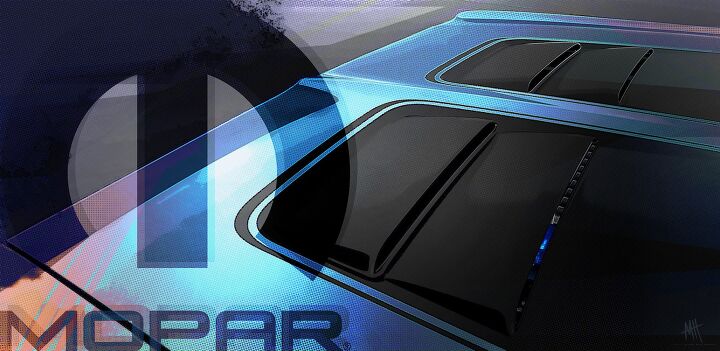
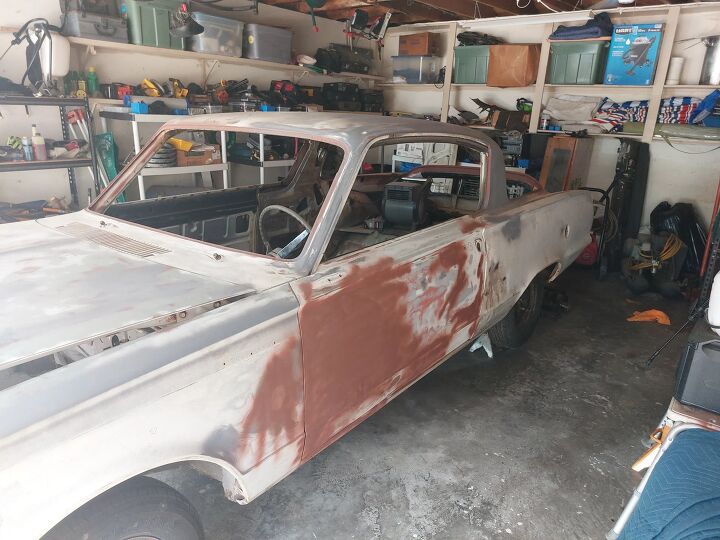
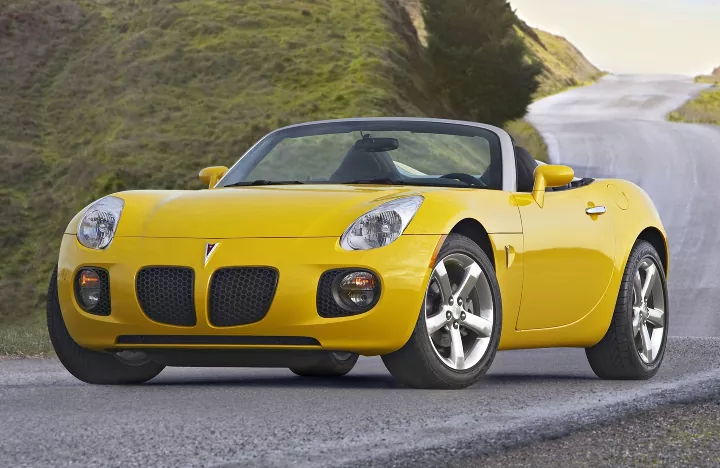
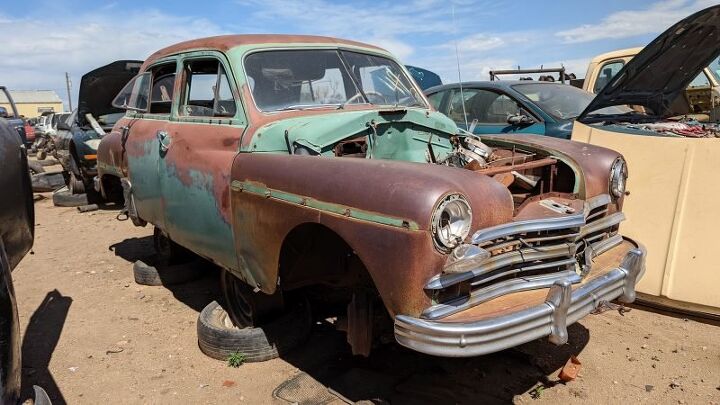
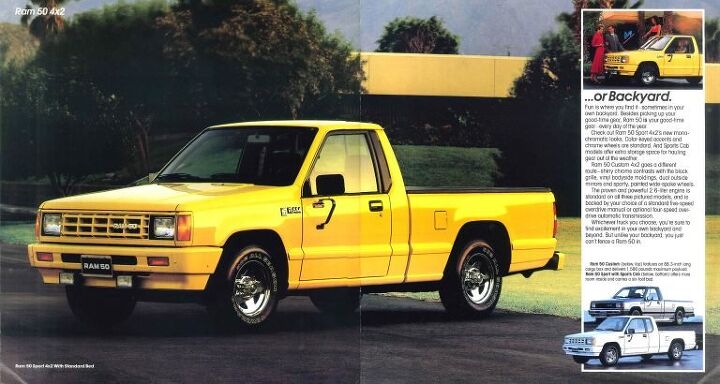
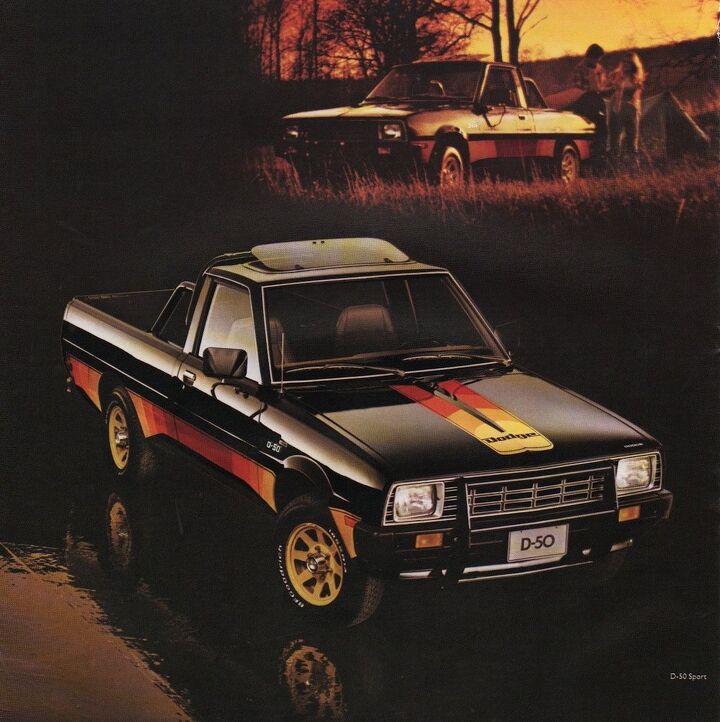
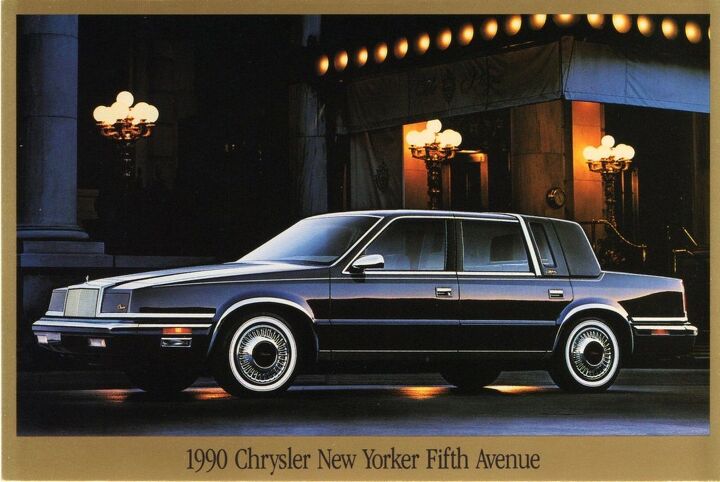

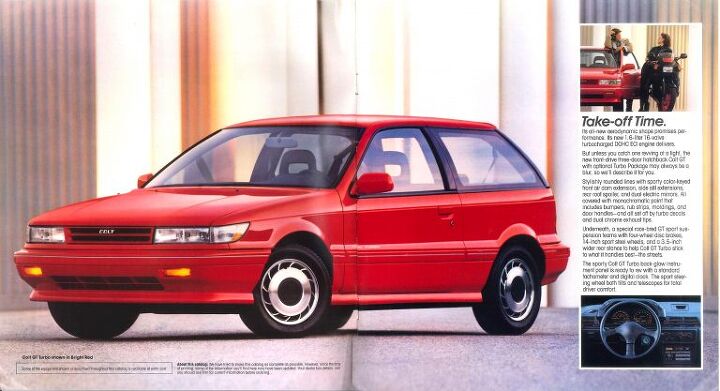
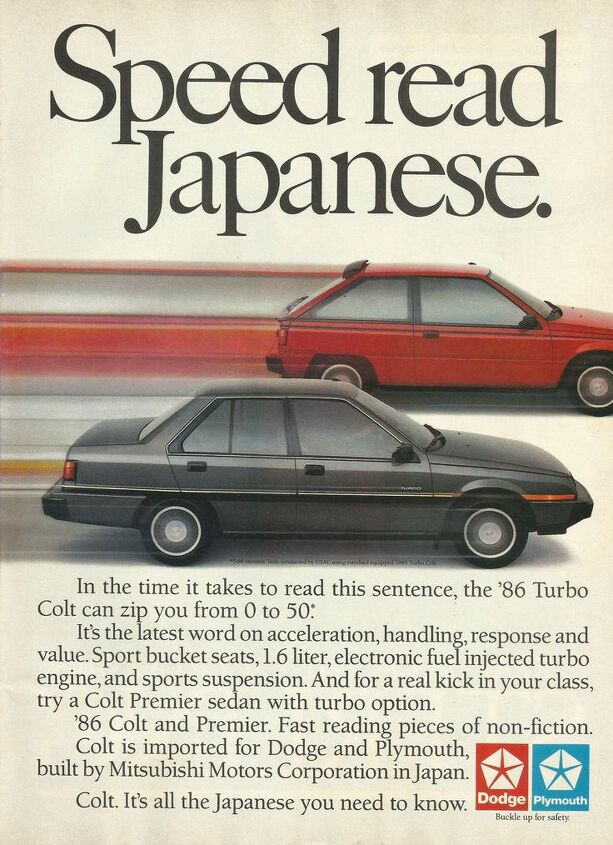
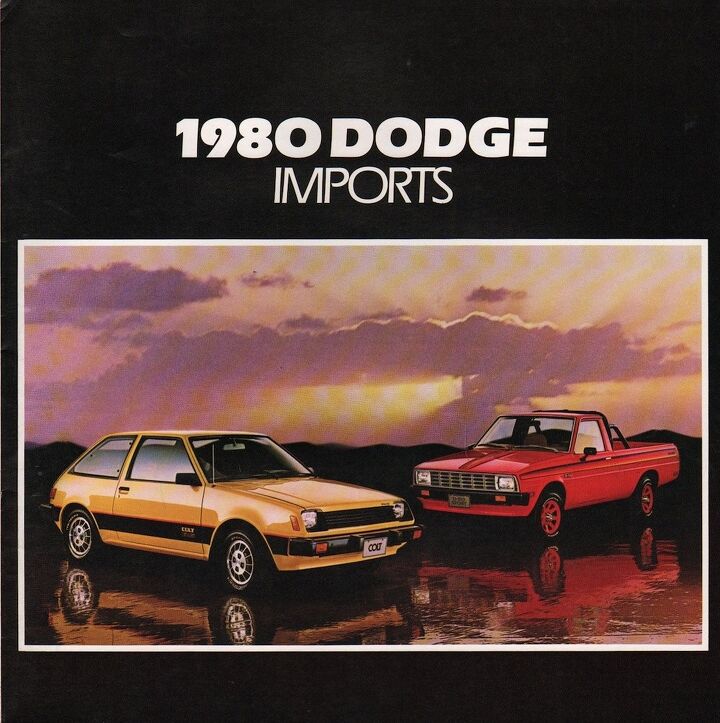
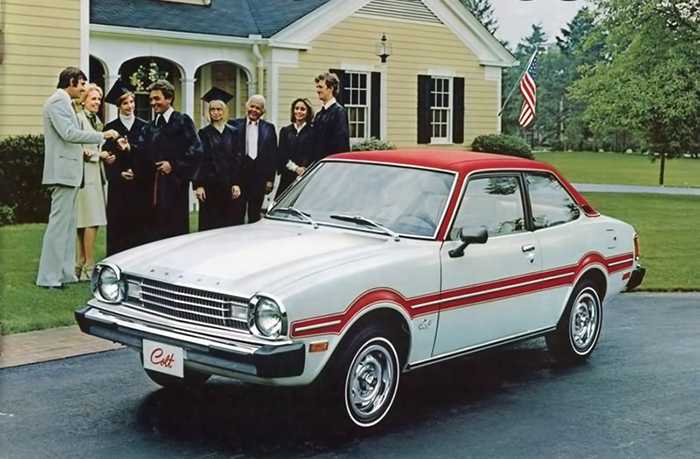
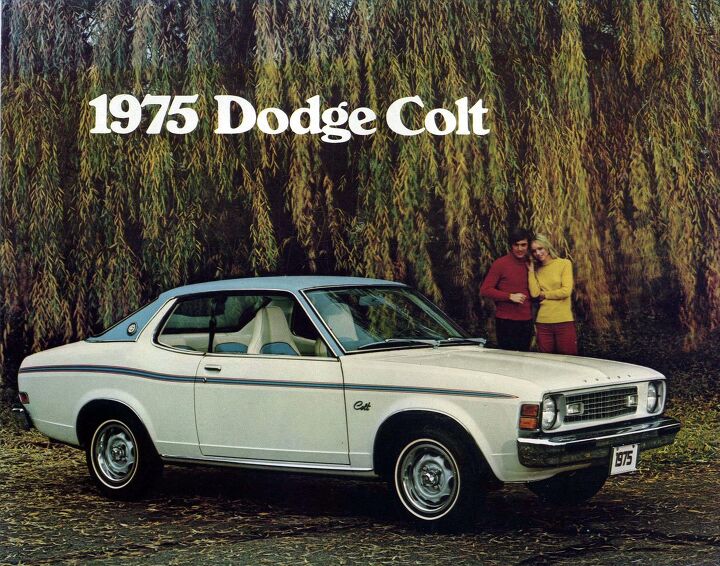
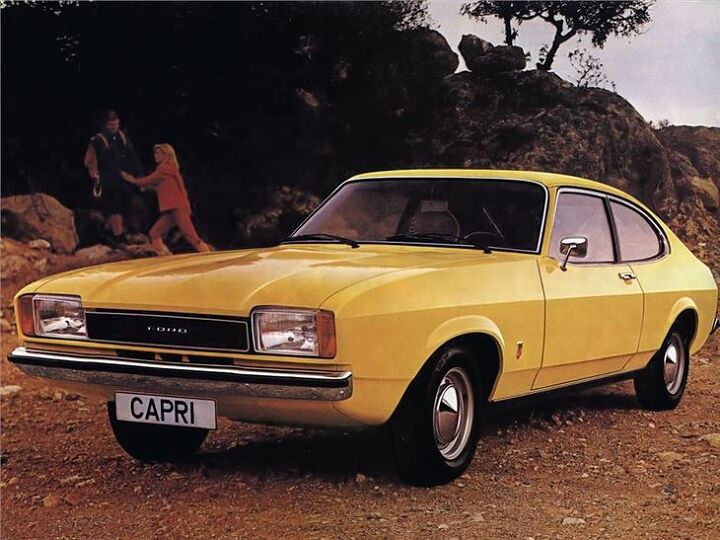
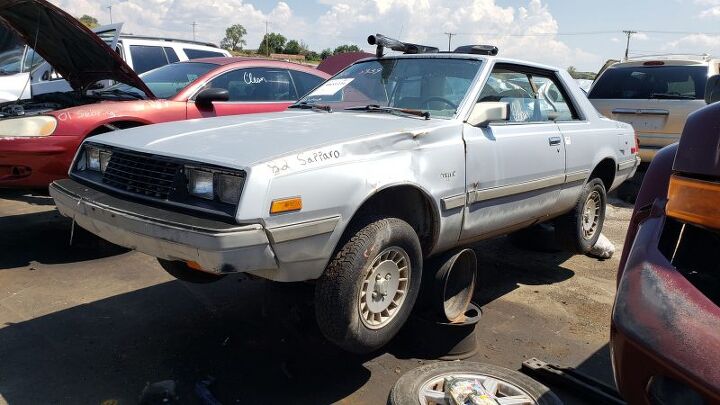
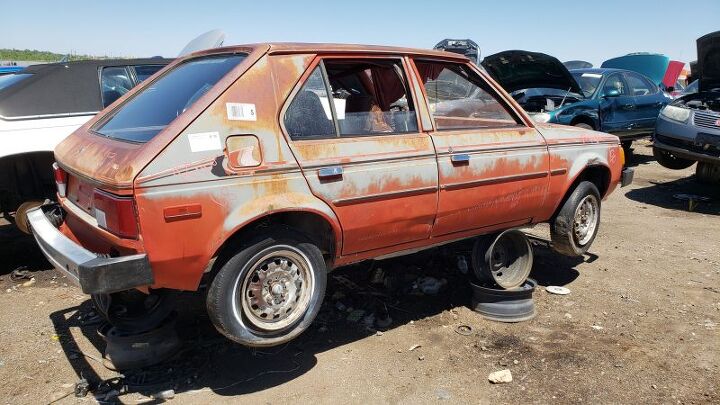
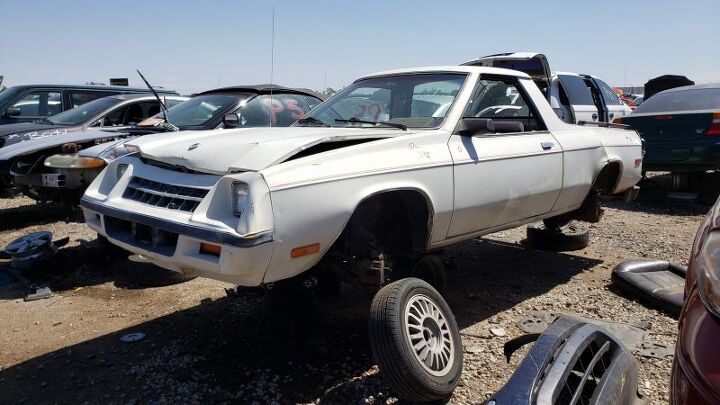
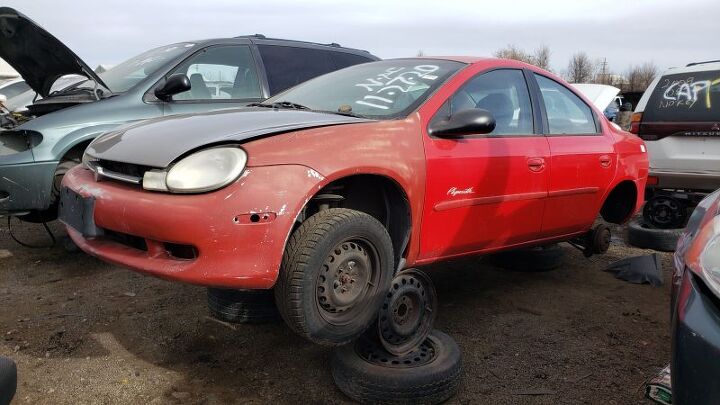
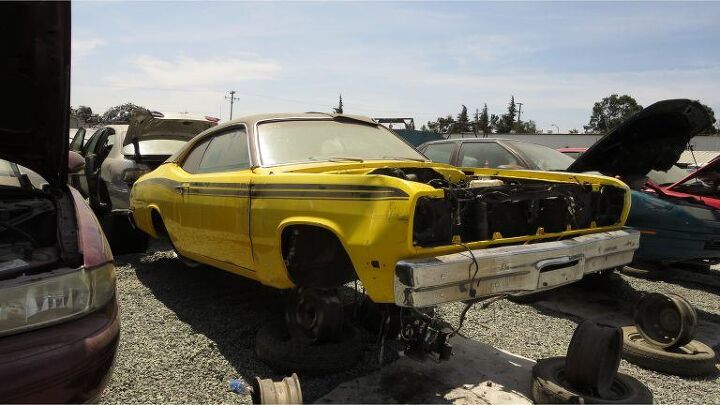
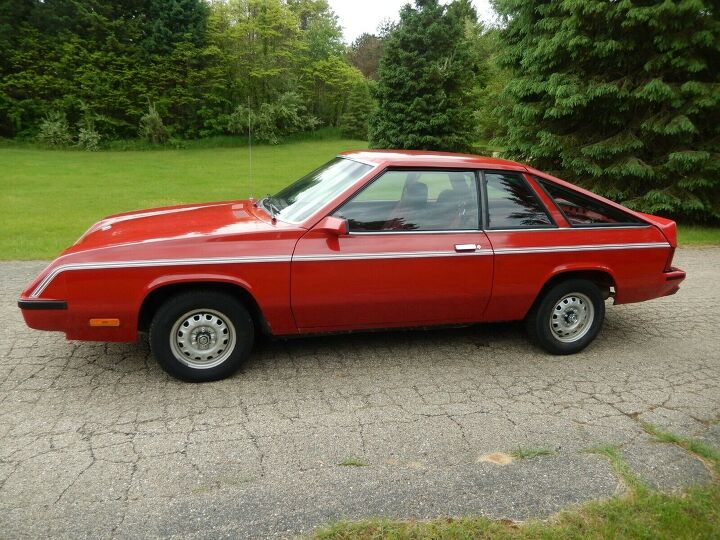
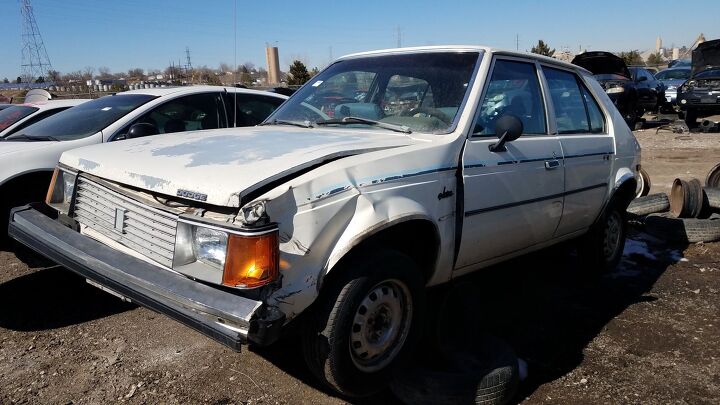
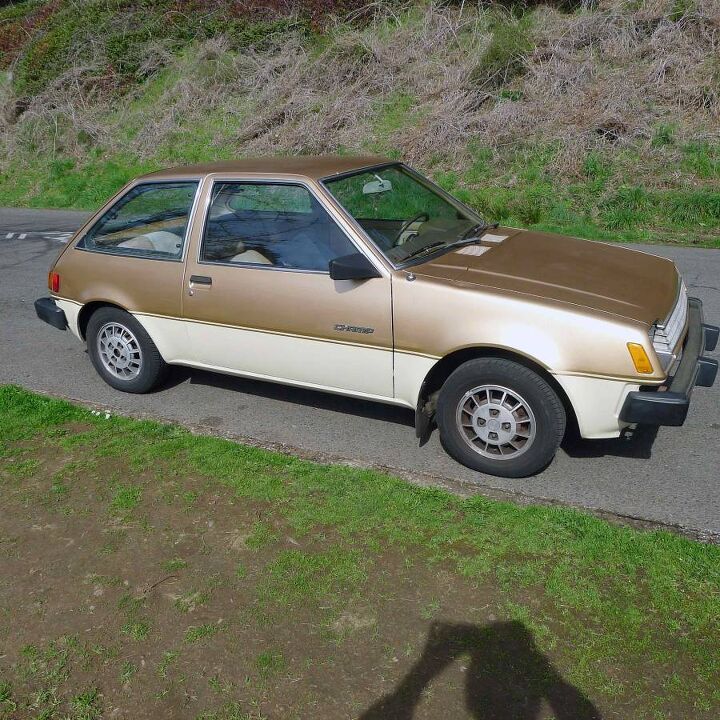
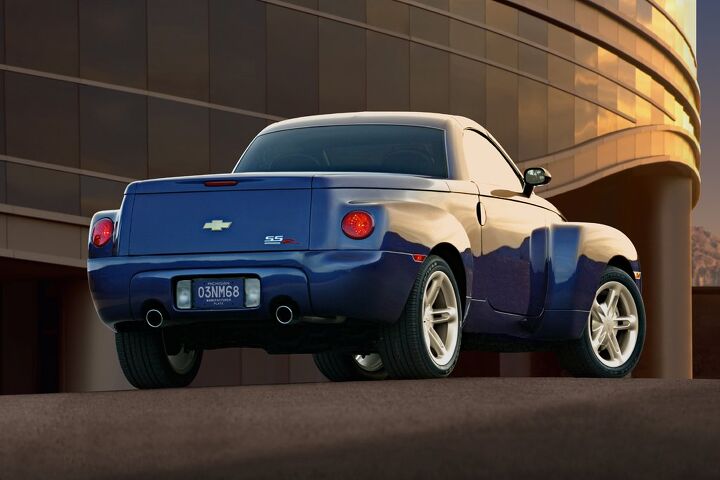
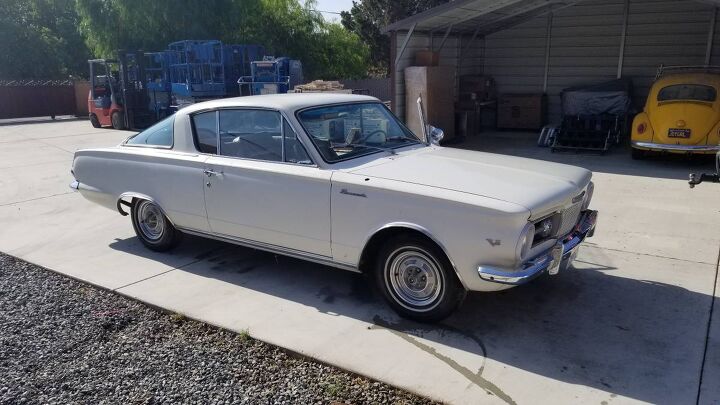
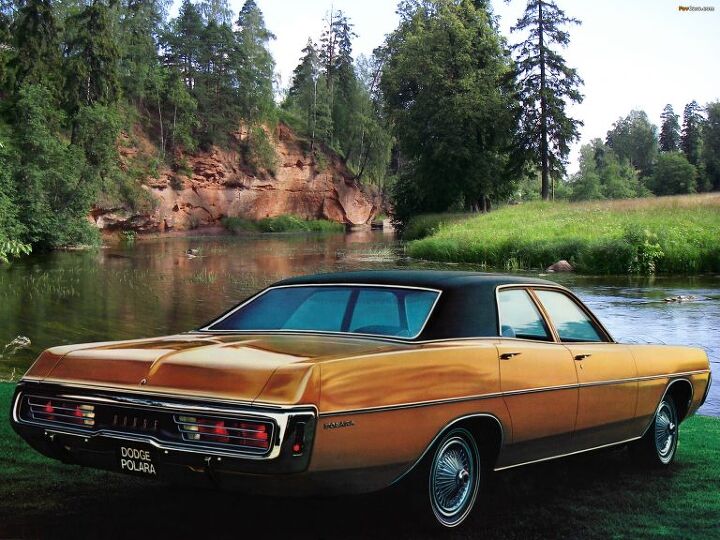

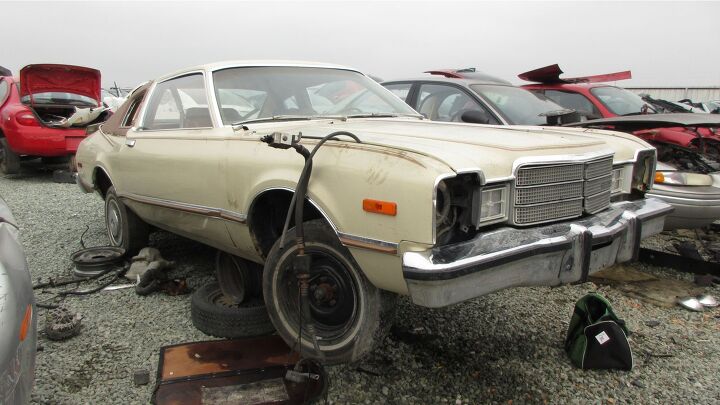
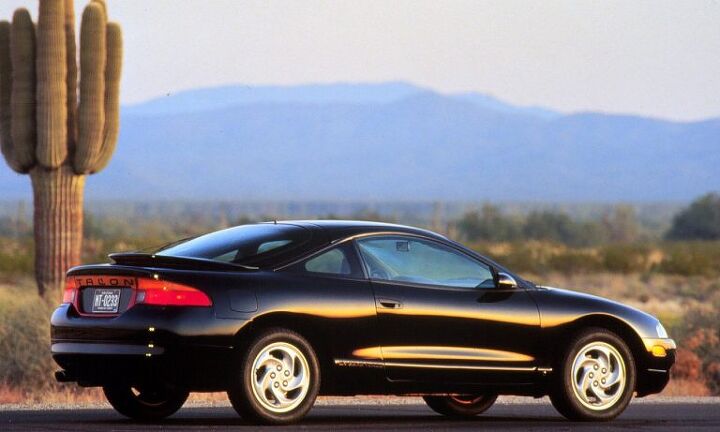
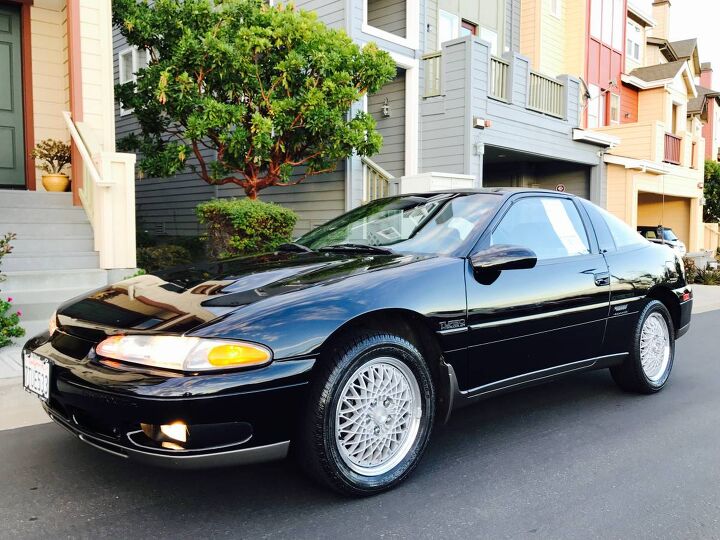


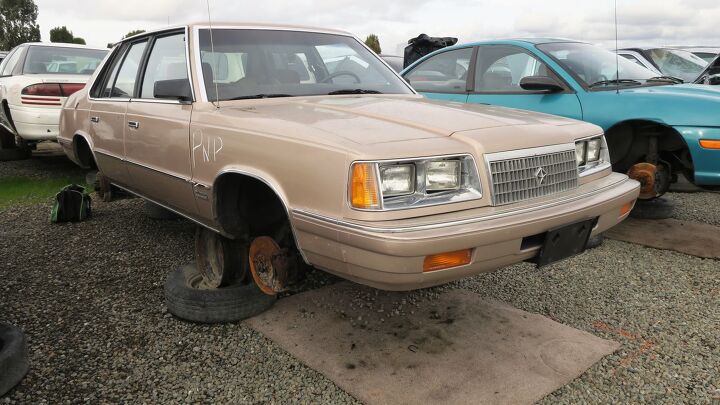
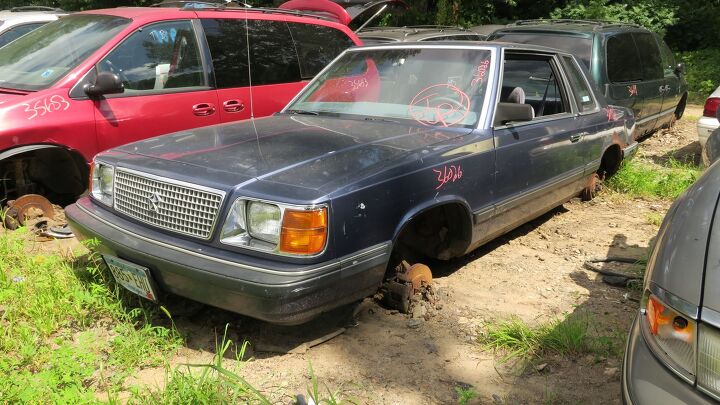
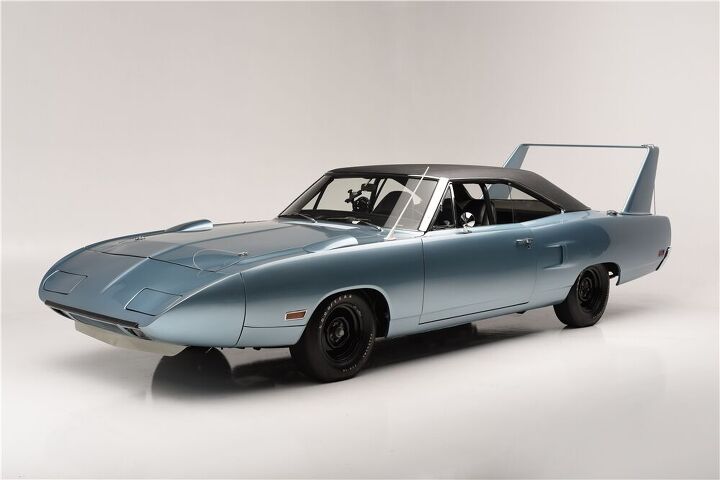
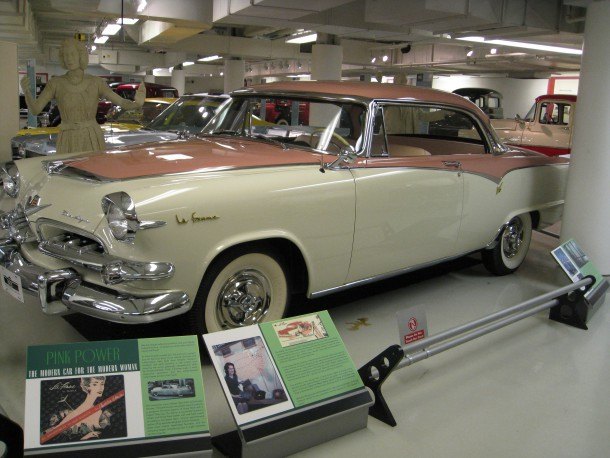
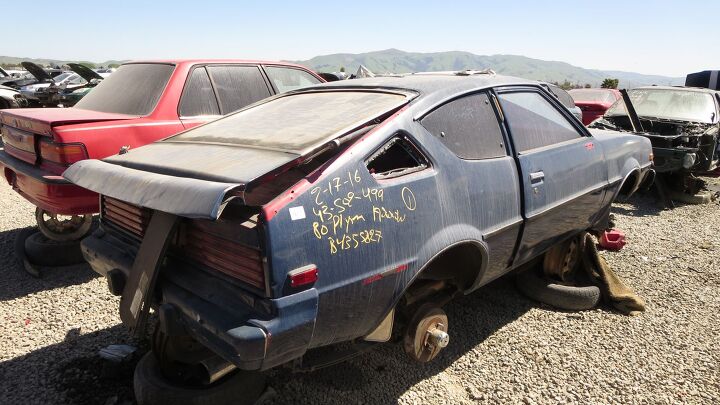












Recent Comments